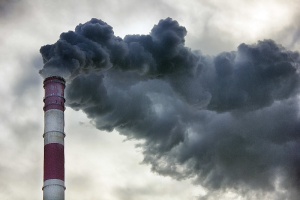New balance required in exploitation of fossil fuels
Countries at last month’s COP27 climate summit agreed yet again to pursue the 1.5-degree goal, which requires reducing global greenhouse gas emissions by 43 per cent by 2030 compared to 2019. At the same time, it is proposed to phase out all forms of fossil fuels.
 |
| New balance required in exploitation of fossil fuels, illustration photo/ Le Toan |
However, many countries – including host country Egypt – want to continue to exploit fossil fuels while still wanting funding to respond to climate change.
The rapid development of coal-fired power plants has helped Vietnam solve its electricity supply issues for its rapid development at a high level, which was accompanied by an average increase in electricity demand of 11 per cent per annum before the pandemic. By the end of 2021, the installed capacity of coal-fired power reached about 24.7GW, accounting for 32 per cent of the system’s total power capacity, according to Electricity of Vietnam.
According to analysts, Vietnam’s strong commitments at recent COP summits will have many impacts on the future of the coal power industry. In addition to the declaration towards net-zero emissions by 2050, Vietnam signed a joint statement on the transition from coal to clean energy, which committed to stop coal power production without recovery technology by 2040, as well as stop issuing new permits for coal-fired power projects without CO2 capture and recovery technology.
The draft of the Power Development Plan VIII from November has also reduced and extended the construction progress of new coal-fired power plants, of which about 7.8GW from difficult projects such as Quynh Lap I and II have been cut, among others. However, the total coal power capacity in the draft by 2030 still targets 39.7GW, representing a 15GW increase compared to the total installed capacity of coal power plants in 2021, and 50.9GW by 2045.
According to many analysts, the development of coal-fired power plants in Vietnam also has significant technical challenges, besides the difficulties in capital mobilisation and the consensus of people and local authorities. Due to the low calorific value of anthracite coal in the country, as well as its high ash content and low volatile matter, it is not suitable for the development of coal-fired power plants using supercritical technology or coal gasification technology. Instead, these plants use imported coal.
According to Dr. Ngo Duc Lam, former director of the Department of Technical Safety and Environment under the Ministry of Industry and Trade, the increasing requirements for environmental standards, combined with socioeconomic development, will require a higher response to emission levels, wastewater, and solid waste treatment of thermal power plants.
“With strong commitments to reduce emissions, there will be additional requirements for CO2 emission recovery during plant operation or premature shutdown of some coal power plants,” Lam said.
The urgency of the requirement for climate protection will require brand new directions for the coal power industry to ensure a balance between the main pillars of sustainable development.
“Many studies have shown that decommissioning low-efficiency coal-fired power plants ahead of schedule, combined with increased efficiency and flexible operation of the units by renovating equipment and improving operation and maintenance, will be essential to achieve these goals,” Lam explained
Meanwhile, the most notable provision in the general agreement at the COP27 climate summit was that countries agreed to establish a loss and damage fund to compensate for developing countries that are heavily affected by extreme weather events caused by climate change.
“This is the biggest victory of developing countries in their efforts to cope with the impacts of climate change,” said Ngo To Nhien, executive director of the Vietnam Energy Transition Initiative.
However, observers said that the fund is littered with unclear details such as, operating mechanisms, contributions to the fund, possible receivers, and how many years it will take to raise enough money for these mechanisms to work.
“Along with that, it is necessary to put in place a reliable control mechanism for these financial flows to avoid losses,” Nhien said.
The loss and damage fund was put on the agenda of COP27 for the first time. However, which countries pay and which countries benefit will be discussed at COP28, along with the remaining conditions.
 | Vietnam joining to clear commitments to phase out coal power A 190-strong coalition, including Vietnam, has agreed to both phase out coal power and end support for new coal power plants. |
 | Vietnam to cut gas power capacity in electricity development plan The Ministry of Industry and Trade (MoIT) has been told to finalise the National Power Development Plan VIII (PDP VIII) for 2021-2030 with a vision to 2045, focusing on reducing coal power plants. |
What the stars mean:
★ Poor ★ ★ Promising ★★★ Good ★★★★ Very good ★★★★★ Exceptional
Related Contents
Latest News
More News
- CME Solar strengthens position in Vietnamese renewables (December 30, 2025 | 11:21)
- Self-care signals shift towards sustainable healthcare (December 30, 2025 | 10:12)
- GreenYellow marks five years of clean energy growth in Vietnam (December 26, 2025 | 15:51)
- TCP Group partner with VNUS to launch water conservation project (December 25, 2025 | 14:00)
- Heavy industries set for pilot greenhouse gas quotas (December 25, 2025 | 10:00)
- Swedfund invests in MSME growth and climate action in Vietnam (December 19, 2025 | 11:42)
- GreenYellow brings solar energy to light up remote schools in Tuyen Quang province (December 19, 2025 | 08:00)
- Charge+, Grab partner to develop EV charging network in Vietnam (December 18, 2025 | 17:11)
- Linking sci-tech and innovation to Vietnam’s net-zero future (December 18, 2025 | 14:31)
- Driving double-digit growth through green and circular transformation in Vietnam (December 17, 2025 | 09:00)

 Tag:
Tag:



















 Mobile Version
Mobile Version